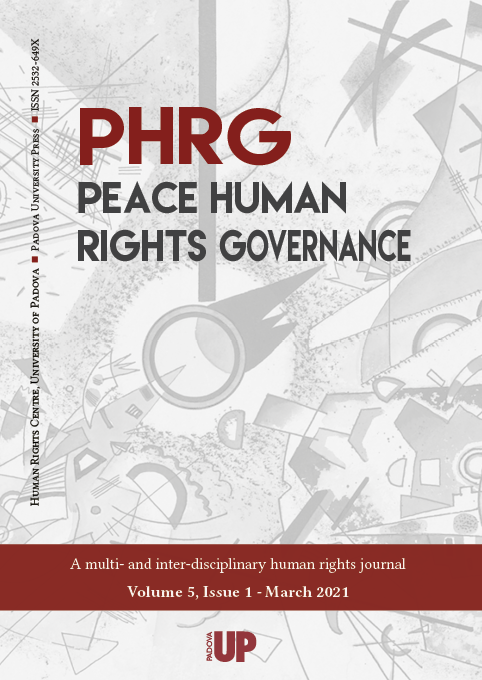Raccolte

Digital (Dis)integration. Narratives and Management of Migration on Social Media
- Sito internet
- Peace Human Rights Governance 5(1)
- Tipologia pubblicazione
- Articolo / Saggio
- Pagine
- 41-64
- Lingua
- EN
The most recent scientific literature explores the problem of online violence in relation to the capacity of digital technology to promote new discriminatory and intolerant behaviours (e.g. racial, ethnic, religious, gender or sexual orientation), linked to the phenomenon of hate or hate ad personam. For the purposes of the research presented here, among the episodes of online violence identified, it is considered important to dwell, in the first part, on an interesting case of analysis concerning the phenomenon of migration, starting in Italy, in relation to the role of digital media and the narrative methods used to influence public opinion through stereotypes and prejudices and the relative levels of technological risk. In the second part of the paper we will try to go beyond the online narrative of migration in order to understand the risks and the usefulness of the web in the management of the migration phenomenon, investigating online good practices. Through a detailed and up-to-date analysis of the scientific literature on the topic we will try to understand how, on the one hand, the digital world has changed and influenced the perception of migration processes with a focus on Italy, and on the other hand, how the internet and social media have helped in recent years both associations, NGOs and institutions in controlling migration flows, thus limiting cases of exploitation and irregular migration routes. The research questions at the basis of the proposed reflection will be: is the web an intercultural place, supporting migration? are social media only spaces for hatred and violence, as in the Italian case, or do we also find positive examples in the relationship between the web and immigration?

